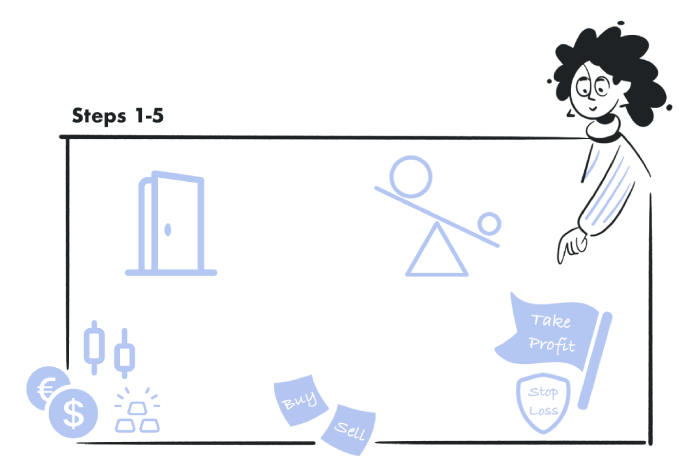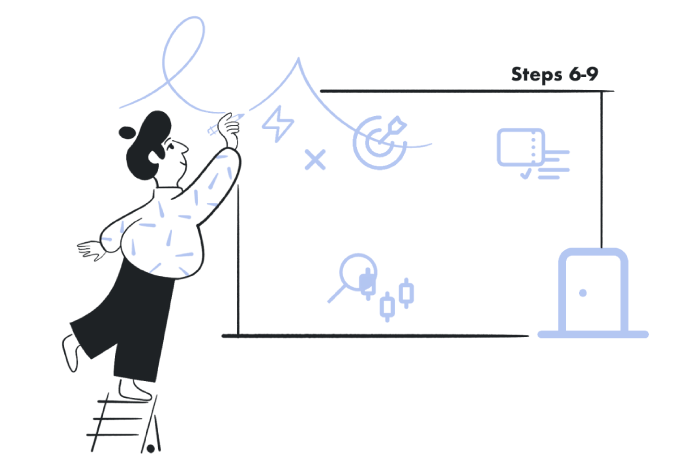How to Place a Trade on a Trading Platform
How to Place a Trade on a Trading Platform
"Learn how to place a trade on any trading platform with this simple step-by-step guide. Perfect for beginners who want to start trading with confidence."
Wikilix Team
Educational Content Team
13 min
Reading time
Beginner
Difficulty

Navigating a trading platform for the first time can seem daunting. There are buttons, charts, figures, and terminology that you have never encountered before. Once you get a handle on what you are doing, it is almost as easy as sending an email. The steps for trading Forex, stocks, or commodities will generally follow the same basic principles. In this article, we will guide you step-by-step from logging in to confirming your Order. After reading this article, you will feel confident enough to place your trades and not second-guess yourself.
Step 1 - Log in and Familiarize Yourself with Your Trading Platform
The first step is obvious, but just as important - you need to log in to your trading account. Every trading platform will look different, and every trading platform has different features, but most trading platforms have the same basic layout for your trading platform:
• There will be charts showing the price movement.
• There will be an order panel for getting in & out of a position.
• There will be an account summary showing your account balance, margin used, and any open positions.
Before you place your first trade, take a couple of minutes to click around the platform. Find the "Buy" button, find the "Sell" button, see how to switch between instruments (FX instruments like EUR/USD, commodities like gold), and learn how to change the chart time frames.
STEP 2: Select Your Trading Instrument
There are hundreds of instruments, such as currency pairs, stocks, indices, commodities, and more. Choose the instrument you would like to trade from the asset list of your current platform.
Example: If you wanted to trade EUR/USD, you would have to click EUR/USD. The platform would then update the chart, and you would see both bid (sell) and ask (buy) prices for that pair in the order panel.
Advice: Always double-check which instrument you are about to trade before placing a trade to avoid potentially heavy losses.

STEP 3: Determine if You Want to Buy or Sell
Your analysis determines this decision:
• Buy (Long Position): You expect the price to rise.
• Sell (Short Position): You expect the price to decline.
For example, if you believe the euro is going to strengthen against the US dollar, you would buy EUR/USD. Conversely, if you expect the euro to weaken against the dollar, you would sell it.
STEP 4: Determine The Position Size
Your position size determines the amount of the trade and thus what a pip or movement in price will be worth. In Forex, it is measured in lots (standard, mini, micro), in stocks, it is measured in the number of shares.
Choosing the right size is a balance between potential profit and acceptable risk. Many traders risk no more than 1–2% of their account balance on a single trade.
Step 5: Add Stop-Losses and Take-Profit
A stop-loss is a safety net that will automatically close your trade if the market moves against you by a predetermined amount. A take-profit does the opposite and will close your trade to lock in profit once the price has returned to your desired target.
For example:
• You buy EUR/USD at 1.1000.
• You set a stop-loss order below the entry at 1.0980 (20 pips).
• You set a take-profit order above the entry at 1.1040 (40 pips above the entry).
These instruments help you trade with discipline instead of emotion.
Step 6: Order type
Most trading platforms offer several order types:
• Market Order: this Order executes at the current price immediately.
• Limit Order: this Order will only get executed at your selected price or better.
• Stop Order: this Order will trigger a market order once a price has been achieved in the market.
Market orders are easy for beginners to use; limit and stop orders are better for managing price entry and exit.
Step 7: Check and Confirm Your Trade
Before clicking on buy or sell, check the following one last time:
• The instrument/currency pair you're trading.
• The direction of the trade (buy/sell).
• The position size of your trade.
• The stop-loss level and take-profit level.
• The order type (market/limit / stop).
Once confirmed, the platform will execute your Order, and you will see that trade in your open positions.
Step 8: Monitoring Your Trade
After you've placed your trade, it is essential to monitor the status of your trade — but do not be tempted to amend your trade without due cause constantly. Monitor the movement of the market, take a look at the margins in your account, and be aware of upcoming news that could affect your trade.
Most platforms offer you the option to amend or close your trades at any time.

Step 9: Closing a Trade
If you wish to, you can close a trade manually, i.e., before reaching your stop-loss or take-profit. To comfortably close your traded position, you can open your open positions list, select the open trade, and select close.
Sometimes closing early is the right move, for example, the market may give you a reasonable profit as it begins to indicate a flattening or reversal.
Real World Example
Let's place all the possible steps into a basic example:
1. Log in to your platform.
2. Select EUR/USD from your available asset list.
3. Based on your analysis, you decide to buy.
4. Position Size, 0.2 standard lots.
5. Stop-loss, 1.0980; Take-profit, 1.1040.
6. Order type: Market order.
7. Hit "Buy" - and your trade is now live.
8. Monitoring the trade for the next few hours.
9. Price has moved to 1.1040 - your take-profit Order is triggered and your trade closes in profit.
Typical Mistakes To Avoid
1. Trading with no plan - Jumping into your trades without any requirements to get in or any rules to know when to exit
2. Overleveraging - The higher the leverage, the greater the losses can magnify
3. Instituting stop loss orders - When you do not implement a worst-case scenario, it can result in a catastrophic account drawdown.
4. Letting emotions make decisions -Traders' most significant hurdle is not using a plan but letting fear and greed dictate their choices.
Tips That Will Help You Place Successful Trades
• Practice Practice Practice - Use the demo until you get comfortable enough
• Look for spreads and fees before placing trades - spreads and fees can eat into your profitability
• Know when there is a news release - Major announcements can create volatility
• Adhere to your strategy - Consistency can and always defeats impulsiveness
In Summary
Placing a trade in the trading platform does not have to be a complicated process. Once you become familiar with the steps from logging in to outlining your stop loss and take profit targets, it eventually becomes second nature. The most important aspect of the trading process is the preparation: understanding what you want to trade, why you want to trade it, and how you will manage the associated risk.
After repeated practice, trading will feel as habitual as pulling up your email. Additionally, the more comfortable you become with the process, the more mental resources you will have to focus on what truly matters - making informed trading decisions based on thorough analysis.
What's Next?
Keep building your knowledge with our structured learning path. Each section builds upon the previous one.
This is the first section
You're at the beginning of your journey!
This is the last section
You've completed this course!
